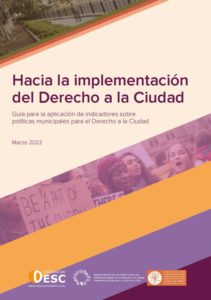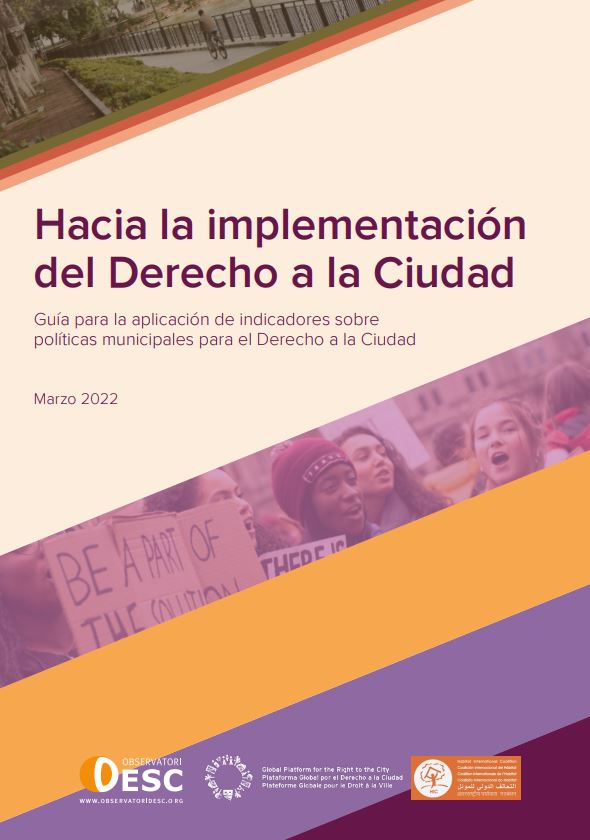
This guide aims to present a series of indicators to monitor the implementation of public policies at the municipal level, and to make it possible to advance in the realisation and implementation of the Right to the City. We understand the Right to the City as the “right of all inhabitants, present and future, permanent and temporary, to inhabit, use, occupy, produce, transform, govern and enjoy just, inclusive, safe, sustainable and democratic cities, towns and urban settlements, defined as common goods for a dignified life, which should be shared and belong to all members of the community”.
With its origins in the writings of Henri Lefebvre, the concept of the right to the city has been gaining momentum in recent decades, driven by a strong articulation of social movements and grassroots organisations that have been embracing the Right to the City as a new paradigm towards building more just, diverse and inclusive cities and settlements. Following the work and struggle of such movements, the Right to the City has been progressively recognised by legislation at local and national level, as is the case of the Constitution of Ecuador (2008), the Statute of Cities of Brazil (2001) and the Political Constitution of the City of Mexico (2012), and also at international level, having been included in the final text of the New Urban Agenda, following the United Nations Conference on Housing and Sustainable Urban Development, Habitat III (2016).
As the Right to the City gains recognition and legal protection, more and more cities and local governments have adopted policies guided by and committed to the ideals of the Right to the City. In particular, the impetus given to the global municipal movement over the last fifteen years has allowed for the implementation of new and courageous policies committed to a city model that prioritises the rights and well-being of its inhabitants over private profit and speculation. However, while efforts to advance the theoretical and normative conceptualisation of the Right to the City have proliferated, there is still a need to advance in the construction of a common repertoire of policies and initiatives to advance its implementation.
This guide seeks to contribute to the construction of such a repertoire, gathering a series of public policies aligned with the principles of the Right to the City and offering some elements for their follow-up, to be applied in the city of choice. In this way, this guide does not have as its priority to offer a “static picture” of the current state of a city, but rather to identify where and how the foundations for its transformation are being built. In this way, this guide seeks to provide the elements for an assessment, not of the state of affairs in a city, but of the progress of the implementation of transformative policies committed to the Right to the City.
In that sense, the main objective of this exercise is not to measure the effects or results of the implementation of such policies in order to measure their “effectiveness”, but to provide insights into the implementation of courageous, progressive and innovative policies. Similarly, it is not intended to provide a comparative matrix that allows for a “ranking” of cities, under a competitive and simplistic vision; but to contribute to the dialogue and exchange between cities to identify meeting points that allow for the advancement of responses to common challenges, respecting the diversity and complexity of local contexts.
